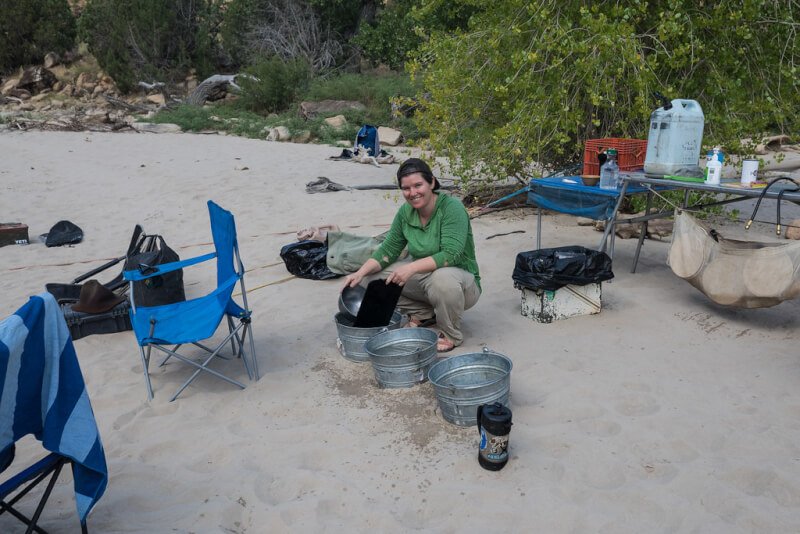Are you a camping enthusiast? If so, you’ve probably heard of the Leave No Trace principle, but do you truly understand its significance? The Leave No Trace principle is a set of guidelines designed to promote responsible outdoor practices and minimize the environmental impact of camping. By adhering to these principles, you can ensure that future generations get to enjoy the pristine beauty of nature just as we do today. In this article, we will explore the Leave No Trace principle and how you can incorporate it into your next camping adventure.
What is the Leave No Trace principle in camping?
The Leave No Trace principle in camping is a set of guidelines and practices that aim to minimize the impact of human activities on the environment when enjoying outdoor recreational activities. It encourages individuals to be responsible stewards of natural resources and to leave the wilderness as they found it, if not better. By following Leave No Trace principles, campers can help preserve the beauty and integrity of natural areas for future generations to enjoy.
Definition and Importance
The Leave No Trace principle is based on the belief that the great outdoors should remain untouched and unaffected by human presence. It emphasizes the importance of leaving natural areas in the same or better condition than when you arrived. By following this principle, you can ensure that the pristine beauty and ecological diversity of the wilderness are preserved.
The Leave No Trace principle is important because it helps protect fragile ecosystems, preserves cultural and historical sites, promotes sound outdoor ethics, and enhances the overall outdoor experience. It encourages campers to be mindful of their actions and to make conscious decisions that minimize their impact on the environment.
History of Leave No Trace
The Leave No Trace principle originated in the 1960s in response to the growing concern about the environmental impact of outdoor recreational activities. It gained traction in the 1970s when the U.S. Forest Service recognized the need for guidelines to minimize human impact on the wilderness. Since then, the Leave No Trace principle has been adopted by various outdoor organizations and agencies, becoming a widely recognized and respected practice among outdoor enthusiasts.
Seven Principles of Leave No Trace
The Leave No Trace principle is based on seven core principles that provide a framework for responsible outdoor recreation. These principles are as follows:
1. Plan Ahead and Prepare
Proper planning before embarking on any camping trip is essential. This includes researching the area, understanding local regulations, and packing necessary gear. By planning ahead, you can minimize your impact on the environment and ensure a safe and enjoyable experience.
2. Travel and Camp on Durable Surfaces
When camping, it is important to choose established campsites and trails to minimize damage to fragile ecosystems. Avoid walking on vegetation, and camp on durable surfaces such as rocks or established tent pads. This helps prevent erosion and protects sensitive plant life.
3. Dispose of Waste Properly
Proper waste disposal is crucial to preserving the cleanliness of natural areas. Pack out all trash, including food scraps, and dispose of human waste in designated facilities or bury it at least 200 feet away from water sources. This helps prevent contamination and maintains the integrity of the environment.
4. Leave What You Find
To preserve the natural beauty of the wilderness, it is important to refrain from taking any natural objects or artifacts. Leave rocks, plants, and other natural features where you find them. This ensures that others can enjoy the same unspoiled scenery.
5. Minimize Campfire Impacts
Campfires can cause significant ecological damage if not properly managed. Use established fire rings or portable stoves whenever possible, and never leave a fire unattended. When extinguishing a fire, ensure it is completely out and cool to the touch before leaving the area.
6. Respect Wildlife
Wildlife encounters can be an exciting part of camping, but it is important to observe animals from a distance and avoid feeding or approaching them. Keep food stored securely to prevent animals from becoming dependent on human sources of food.
7. Be Considerate of Other Visitors
Respecting other visitors is essential to maintaining a positive outdoor experience for everyone. Be mindful of noise levels, yield to others on trails, and leave communal areas clean and tidy for others to enjoy.
Leave No Trace Practices for Specific Activities
The Leave No Trace principle applies to a variety of outdoor activities, each with its own specific practices. Here are some Leave No Trace practices for specific activities:
1. Hiking and Backpacking
- Stick to established trails to minimize impact on vegetation and wildlife habitats.
- Camp at designated campsites or durable surfaces.
- Follow proper waste disposal practices and carry out all trash.
2. Canoeing and Kayaking
- Avoid disturbing wildlife by maintaining a safe distance.
- Leave aquatic plants and animals undisturbed.
- Properly dispose of waste, including human waste, away from water sources.
3. Mountain Biking
- Stay on established trails and avoid creating new trails.
- Yield to hikers and horses, and slow down in congested areas.
- Avoid skidding and riding in muddy or sensitive areas.
4. Climbing and Mountaineering
- Use established routes and avoid trampling vegetation.
- Carry out all trash and waste, including human waste.
- Minimize rappelling and lowering impacts on rock faces.
5. Fishing and Hunting
- Follow all fishing and hunting regulations and obtain necessary permits.
- Practice catch and release to preserve fish populations.
- Pack out all fishing and hunting gear and properly dispose of any waste.
Benefits of the Leave No Trace Principle
The Leave No Trace principle offers several benefits that contribute to the overall preservation and enjoyment of the outdoors.
Environmental Conservation
By following Leave No Trace principles, individuals can help minimize the ecological impact of outdoor recreational activities. This leads to the conservation of natural resources, preservation of habitats, and protection of sensitive ecosystems.
Preservation of Cultural and Historical Sites
Respecting and preserving cultural and historical sites is an important aspect of the Leave No Trace principle. By leaving these sites undisturbed, we can ensure that their historical significance is preserved for future generations to appreciate.
Promotion of Sound Outdoor Ethics
Adhering to the Leave No Trace principle promotes sound outdoor ethics among outdoor enthusiasts. It encourages responsible behavior and a deeper appreciation for the beauty and fragility of the natural world.
Enhancement of Outdoor Experience
Following Leave No Trace principles enhances the outdoor experience for both individuals and future visitors. By minimizing impact, campers can immerse themselves in the unspoiled beauty of the wilderness and create lasting memories.
Conclusion
The Leave No Trace principle is a fundamental part of responsible camping and outdoor recreation. By following the seven principles and specific practices for different activities, individuals can minimize their impact on the environment, preserve cultural and historical sites, promote sound outdoor ethics, and enhance the overall outdoor experience. It is our collective responsibility to enjoy and protect the natural world, ensuring that it remains unspoiled for future generations to enjoy. So, next time you venture into the great outdoors, remember to leave no trace and leave it better than you found it. Happy camping!


